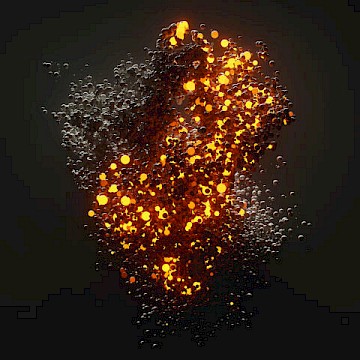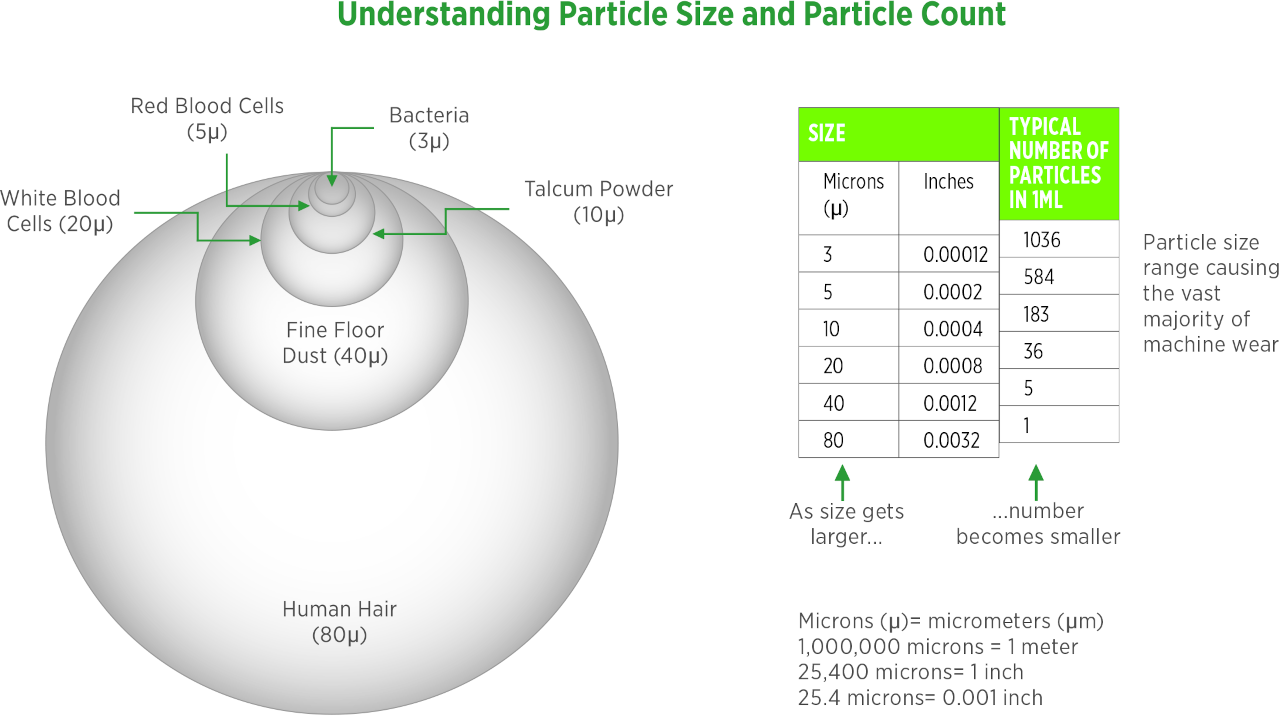Particle Counting: Why Smaller Particles Lead to Big Trouble
 If you have been in the Maintenance/Reliability space for any length of time, you may have heard someone say, “We need to drain or change the oil because of the number of particles that can be seen.”
If you have been in the Maintenance/Reliability space for any length of time, you may have heard someone say, “We need to drain or change the oil because of the number of particles that can be seen.”
While checking for contaminants is a must for any great inspection program, it is important to know that the particles doing the most damage to machine parts are far too small to be seen with the naked eye.
Why Small Particles Matter More
Without a magnifying glass or microscope, the human eye can only see particles down to about 40 microns in size. The particles doing the most damage to our lubricants are in the 3-10 micron range, way smaller than what can be seen on a typical visual inspection of the lubricant. These particles are more concerning than their larger counterparts because they are close to the size of typical film thicknesses, which can allow them to go through the load zone, causing damage to machine parts.
- Hydrodynamic Lubrication (Sliding) - Typical oil films are 5-20 microns.
- Elastohydrodynamic Lubrication (Rolling) - Oil films can be less than 1 micron.

Breaking it Down
Another issue with small particles is that they are harder to break down. To understand this concept better, think of breaking a large stick down to use for kindling in your fireplace. When the stick is long, you can snap it over your knee or in your hands, breaking the larger stick into smaller pieces; however, if you have done this before, you know that when you get a stick about the size of your hand, it’s almost impossible to break down any further. The same is true of small particles; instead of being broken down to even smaller sizes when they pass through the load zone, they cause abrasive wear.
Built-in
When a machine comes in new from the OEM or has been brought back to the plant after a rebuild, it is always a good idea to perform a flush. This flush will help send any particles that may still be in the machine out of the drain port.
Ingested
Particles can be ingested from the process, atmosphere or combustion by way of leaking seals, pipes and hoses; the most common method of entry is through the headspace. Open hatches or ports on the top of a reservoir should be closed to deter particle entry. One of the most overlooked items for particle ingression is the breather. Machines often come with a vent or vented plug to allow a machine to breathe. These allow a direct path for contaminants. Hydraulic lubricants often have tight cleanliness goals but think of the headspace protection on most of the units - a cap with tightly woven steel wool. Replacing these with a low-micron filter will help eliminate this easy path.
Generated
Particles coming from this type of ingression are most often controlled by lubricant filters. Something to consider here, though: remember the size of the film thicknesses we discussed earlier? If your components are separated by very small film thicknesses, and you are running a 40-micron filter, are you eliminating the particles that are doing the damage? When choosing filters for machines, it is important to keep your lubricant cleanliness goals in mind.

Do Your Machines Have an Issue?
Lubricant analysis is the most common way of quantifying the number of small particles found in machines. This information can be very helpful, as it will tell if proactive steps such as controlling the headspace are working, as well as letting users know that the current filtration strategy is helping to eliminate particles of the right size.
